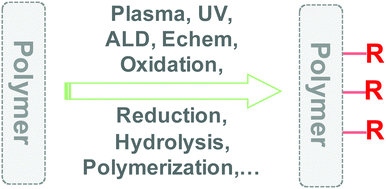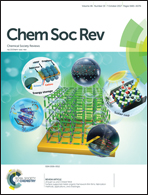Surface functionalisation of polymers
Abstract
Many applications of polymers require the functionalisation of their surface for use in sensors, composite materials, membranes, microfluidic and biomedical devices and many others. Such surface modifications endow the surface with new properties independent of those of the bulk polymer. This tutorial review describes the different methods, based on very diverse principles, that are available to perform this surface functionalisation, including plasma and UV irradiation, atomic layer deposition, electrochemistry, oxidation, reduction, hydrolysis, the use of radicals and grafting “on” or “from” polymers. The principles of the different methods are briefly described and many examples are given to highlight the possibilities of the methods and the possible applications. A section is devoted to the surface modification of polymeric nanoparticles.



 Please wait while we load your content...
Please wait while we load your content...